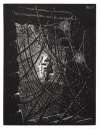Marcel
Broodthaers
Marcel Broodthaers, a Belgian poet turned artist, crafted an oeuvre that defied convention with its intellectual wit and critical examination of the art world. If you’re looking for Marcel Broodthaers original prints and editions for sale or would like to sell, request a complimentary valuation and browse our network’s most in-demand works.
Marcel Broodthaers art for sale
Discover Marcel Broodthaers prints for sale, exclusively available through our private network of collectors. Explore signed and unsigned screenprints, lithographs, digital prints, and rare editioned proof prints by era-defining blue chip artists.
Sell Your Art
with Us
with Us
Join Our Network of Collectors. Buy, Sell and Track Demand
Biography
Marcel Broodthaers, born in Brussels in 1924, began his career as a poet before transitioning into the visual arts at the age of 40. Discouraged by his lack of financial success in literature, Broodthaers turned to art, where he developed a distinctive conceptual practice that interrogated the nature of art, language, and institutional authority.
His early works, such as Pense-Bête, which involved embedding unsold poetry books in plaster, signalled his shift from text to visual art. Broodthaers became a pioneering figure in the Conceptual Art movement, known for his critical engagement with the mechanisms of art production and display.
Broodthaers' journey into the visual arts was marked by a deep engagement with the philosophical and structural underpinnings of art itself. His transition from poetry to art in 1964 was emblematic of his desire to explore the limitations and possibilities of different mediums.
One of his most significant projects, the Musée d’Art Moderne, Département Des Aigles, was a mobile, fictional museum that questioned the nature of museums and the commodification of art. This project, along with his other works, positioned Broodthaers as a critical voice in conversation surrounding the institutionalisation of art.
In addition to his conceptual installations, Broodthaers was also a printmaker. His prints, such as the 1974 lithograph Les Animaux De La Ferme I, reflect his fascination with language and semiotics. In this artwork, Broodthaers juxtaposes images of farm animals with the names of luxury car brands, creating a satirical commentary on consumerism and the commodification of culture. This playful juxtaposition reflects the influence of Surrealist painter René Magritte, whom Broodthaers befriended in his youth. Inspired by Magritte’s iconic painting The Treachery of Images (1929), which famously declares “This is not a pipe” beneath an image of a pipe, Broodthaers similarly subverts visual and linguistic meanings, engaging in his own exploration of contradiction and interpretation.
Broodthaers' participation in major exhibitions, including Documenta in Kassel, helped to cement his reputation as a leading figure in Conceptual Art. Despite his relatively short career—he died in 1976—Broodthaers' work continues to prompt a critical reconsideration of the relationship between art, language, and the institutions that frame our understanding of culture.

















